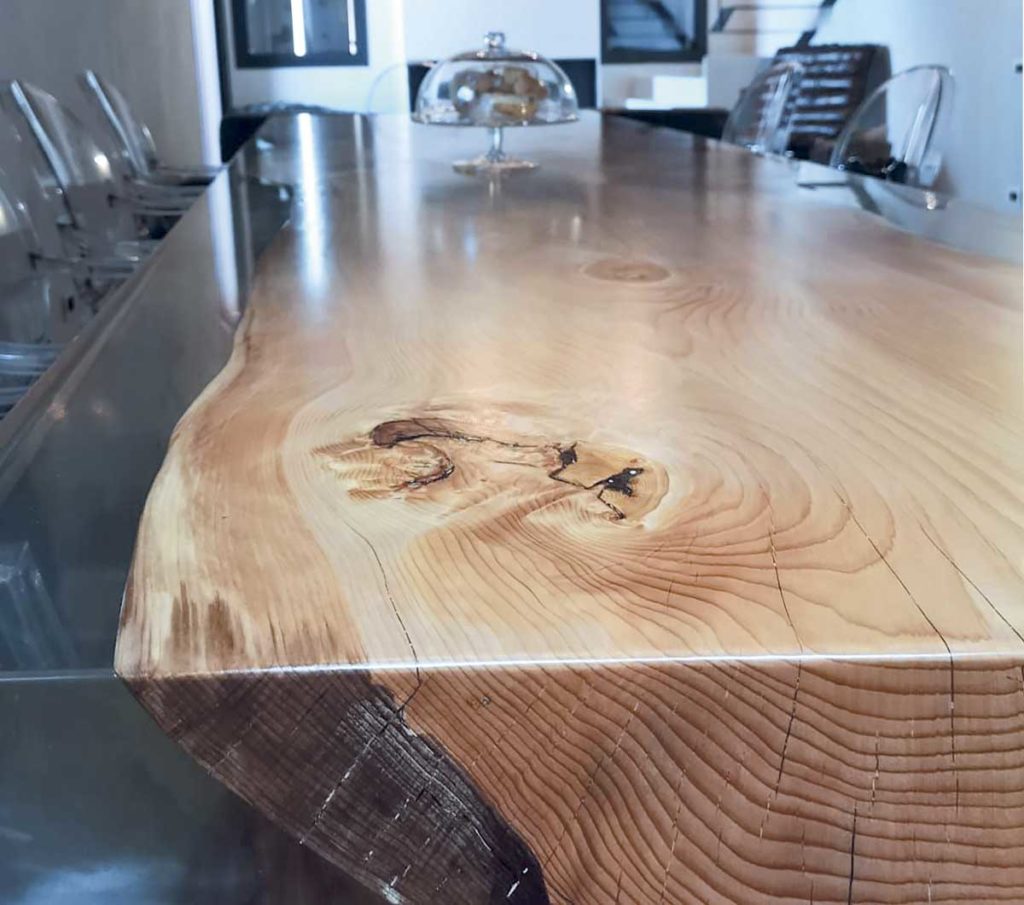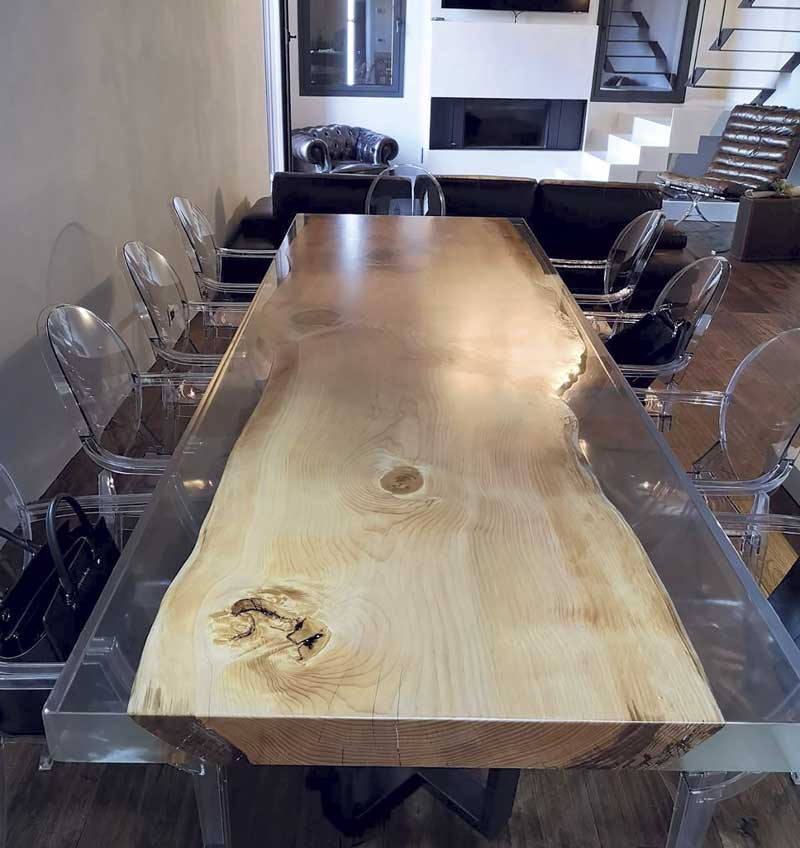
The epoxy coating can have both liquid and granular consistency and is solvent-based. The various components of the liquid mixture are kept in suspension and when the solvent evaporates the coating dries.
The epoxy coating is composed of the following components:
What is the epoxy clear coating
The epoxy clear coat it’s a usually two-pack coating that let see the surface of the support. The epoxy coating, liquid or in powder, is usually made by a main element: a binder made from epoxy resins.
This epoxy resin is capable of creating on the coated surface a very thin film. This film protects them from external agents such as water, corrosion due to the passage of time, weathering.
The only limit of this coating is the low resistance to sunlight which in the long run makes the surfaces opaque and fragile.
Epoxy clear coating – FAQ
Is epoxy waterproof?
Epoxy coatings can withstand water but are not hydrophobic.
Is epoxy coating permanent?
No, it can be affected by deterioration like any other coating film.
Does epoxy cure underwater?
No, it doesn’t cure underwater.
Is epoxy dangerous to inhale?
Yes, it is.
Is epoxy hard to work with?
Yes, because it’s slower to dry and consequently the time required to move the coated parts is longer.
Does epoxy dry hard?
It’s slower than polyurethane coatings.
How do you make epoxy dry faster?
By oven, but this can cause yellowing to the coating film.
Is epoxy coating toxic?
Yes, like most coatings.
Can epoxy be used on wood?
Yes, is possible to use specific epoxy coatings for wood and wood floors
Can you use epoxy to seal wood?
Yes, you can.
Can you put epoxy on top of polyurethane?
Preferably not.
What is the epoxy clear coating used for

The epoxy clear coat is a multi-use coatings. among the many uses for which it is used is particularly suitable as a wood coat for modern design tables.
Moreover, the versatile features and adhesion capabilities allow the use of this type of paint on metal and wood surfaces.
How to apply epoxy resin to wood
There are different methods of applying epoxy resin. It can be applied by casting, by roller or by brush. The choice of method is closely linked to the processing conditions and the type of support to be treated.
To carry out incorporations, castings, wood treatments with a brush or roller to finish, certain conditions must be met. In fact, the resin must be used in an environment with a minimum temperature of 15°C.
Below this threshold there are problems like:
- Rubberiness,long time sticky surfaces.
- Difficult workings with kneading utensils.
- Presence of bubbles difficult to eliminate.
It should not be diluted with other solvents but mixed thoroughly by combining A + B after weighing them according to the indicated mixing ratio. It can also be colored with pigments or be over-coated with acrylic or polyurethane coatings.
Coloring or coating can be performed by brush or spray, as long as it is previously matted with scotch-brite. However, it will be necessary to wait at least 4 days because it is still in the reticulation phase even if it is solid to the touch.
Epoxy clear coating made by Sayerlack
Liquid lens QUL6283/00 to incorporate objects or to fill cavities by combining materials of different nature.
QUL6283/00 is a two-pack, transparent, epoxy product, for indoor use. It features high transparency, no shrinkage and low yellowing. Once added the part B it is suggested to stir very well by spatula for at least 3-5 minutes. We suggest to not use a mechanical stirrer in order to not stabilize foam.
In order to further improve the mixing, avoiding that residues remain of the individual components which would then not harden, it is advisable to slowly pour the freshly mixed product into a second container and then mix well again before use.
In order to destroy the air bubbles on the surface you can blow it with hot air by means of a common hair dryer.
The better defoaming effect can be achieved by carrying out the curing under vacuum into an autoclave. If necessary, after curing it is possible to polish the surface. Otherwise it is possible to sand the surface and then apply a transparent top coat, acrylic or PU. We suggest to use molds made of non-stick plastic materials such as polypropylene or polyethylene.
Pigmentation is possible, for indoor use only, with XC1900/XX or XCL3779 XX color dyes, at about 0.1 – 0.5% max. For the pigmentation with higher hiding power it is possible to use the pastes series TP2009/XX at 0.5 max.


